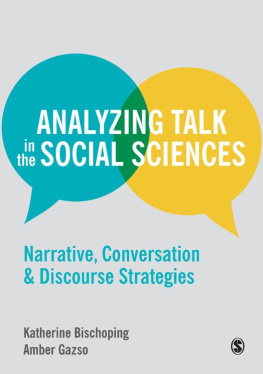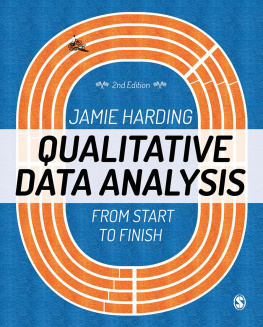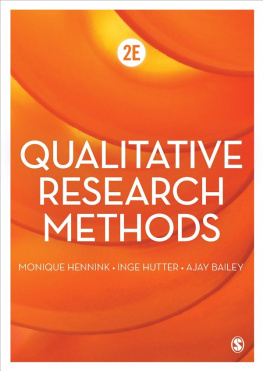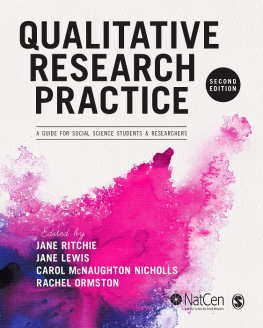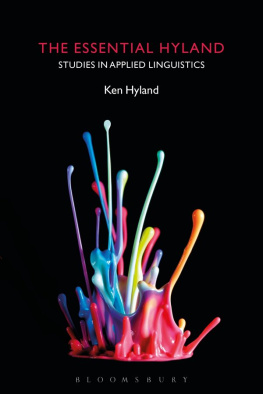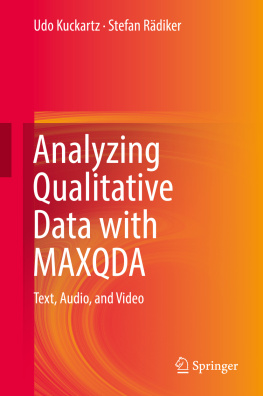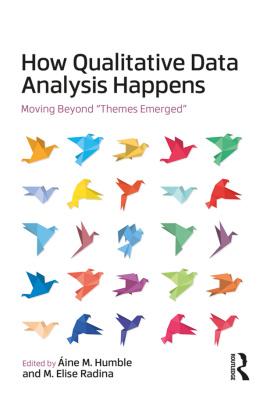Analyzing Talk in the Social Sciences
Analyzing Talk in the Social Sciences
Narrative, Conversation and Discourse Strategies
- Katherine Bischoping
- Amber Gazso
SAGE Publications Ltd
1 Olivers Yard
55 City Road
London EC1Y 1SP
SAGE Publications Inc.
2455 Teller Road
Thousand Oaks, California 91320
SAGE Publications India Pvt Ltd
B 1/I 1 Mohan Cooperative Industrial Area
Mathura Road
New Delhi 110 044
SAGE Publications Asia-Pacific Pte Ltd
3 Church Street
#10-04 Samsung Hub
Singapore 049483
Katherine Bischoping and Amber Gazso 2016
First published 2016
Apart from any fair dealing for the purposes of research or private study, or criticism or review, as permitted under the Copyright, Designs and Patents Act, 1988, this publication may be reproduced, stored or transmitted in any form, or by any means, only with the prior permission in writing of the publishers, or in the case of reprographic reproduction, in accordance with the terms of licences issued by the Copyright Licensing Agency. Enquiries concerning reproduction outside those terms should be sent to the publishers.
Library of Congress Control Number: 2015938458
British Library Cataloguing in Publication data
A catalogue record for this book is available from the British Library
ISBN 978-1-4462-7248-0
ISBN 978-1-4462-7249-7 (pbk)
Editor: Jai Seaman
Assistant Editor: James Piper
Production editor: Katie Forsythe
Copyeditor: Christine Bitten
Proofreader: William Baginsky
Marketing manager: Sally Ransom
Cover design: Shaun Mercier
Typeset by: C&M Digitals (P) Ltd, Chennai, India
Printed and bound by CPI Group (UK) Ltd, Croydon, CR0 4YY
To our students
Table of Contents
About the Authors
Katherine Bischoping(PhD, University of Michigan) is an Associate Professor of Sociology at York University. Her intellectual trajectory from statistics to applied survey research, and then to qualitative approaches in sociology and beyond, including poetry and playwriting, has been informed by her abiding fascination with research methods. Katherines projects examine the behind-the-scenes work of methodologists, the role of narration and memory in oral history methods, gendered discourses in cultural narratives, and cultural work and workers. She has been published in such journals as
Public Opinion Quarterly,
Holocaust and Genocide Studies,
American Journal of Political Science,
Canadian Review of Sociology and Anthropology, and
Sex Roles.Amber Gazso(PhD, University of Alberta) is an Associate Professor of Sociology at York University. Her main areas of research interest include: citizenship; family and gender relations; research methods; poverty; and the welfare state. Much of her research explores family members relationships with social policies of the neo-liberal welfare state and has been published in such journals as the
Canadian Journal of Sociology,
Citizenship Studies,
Journal of Family Relations,
Journal of Family Issues, and the
International Journal of Sociology and Social Policy. Amber works comfortably with a mixed methods approach (quantitative and qualitative) in her research but has shifted to greater application of qualitative methods more recently. This first book, in some ways a consolidation of her knowledge of qualitative analysis, has deepened her interest in this field of study.
About The Companion Website
We could not have written this book without the feedback provided by colleagues from York University and other universities who were willing to be readers for us. We are incredibly grateful for your time and expertise. You include Jeffrey Aguinaldo, Renee Anspach, Greg Bird, Matthew Clark, Susan Ehrlich, Laura Funk, Susan Levesque, Ryan McVeigh, Carmela Murdocca, Riley Olstead, and Roberto Perin. We also thank Logan Donaldson and Elizabeth Quinlan for permitting us to use excerpts from their data.
We also could not have written it without our graduate students, who read whole or partial chapters or simply talked with us about some dilemma we faced as we were writing. We particularly thank Kritee Ahmed, Bojan Baca, Krista Banasiak, Megan Butryn, Selom Chapman-Nyaho, Ian Davidson, Julianne DiSanto, Erkan Ercel, Zhipeng Gao, Markus Gerke, Duygu Gl Kaya, Caitlin Janzen, Azar Masoumi, Shihoko Nakagawa, Marc Sinclair, Gkbr Tanyldz, and Jason Webb, as well as students in our graduate courses in Interviewing Methods and Qualitative Methods. For meeting the challenges of research assistance and support, we thank Rawan Abdelbaki, Daniel Blais, Angelina Duhig, and Adam King.
We thank the team at SAGE for believing in this project. We thank our family and friends who encouraged and inspired us. Our final thank-yous are for the places that made the writing easier. The New York Public Library reminded us of Patience & Fortitude, Lake Simcoe and Sir Winston Churchill Park brought us respite and perspective, and the tree window that Michael built framed our writing with the changing of the seasons.
One Introduction
Why You Should Read this Book
Picture these scenarios:
- As a graduate student, youve conducted 45 interviews. You have over 1000 pages of near verbatim transcripts of the interviews to analyze. You panic when you look at these pages. You panic more when your supervisor tells you that simply coding your data for themes will not help you at your defense or at the job talks you hope will follow.
- As a researcher, youve encountered numerous challenges in recruiting the 30 participants youve planned for your study. Between timelines and funding troubles, youve had to wrap up your data collection with only 12 interviews completed. You now have talk data, but not enough for the kinds of analytic strategies youre used to. You dont know what to do.
- As a professor, youre responsible for mentoring students to their successful completion of their degrees. You have a meeting with a promising student who has obtained ethics approval for videotaping marital counseling sessions. When you ask him, What method of analysis are you planning to use?, he says, I dont know what you mean.
- One of your doctoral students intends to do research on understanding the experience of surviving cancer. When you meet to discuss her research proposal, she explains that she thought using a Foucauldian approach would give her work cachet.
- Youve never been completely satisfied with how youve been analyzing data. You do the same things you always do and, frankly, youre bored. You wonder how you might spice things up.
What would you do in each of these scenarios? Our answer is that you should read this book. We wrote it for our advanced students and for researchers like us, for those curious about how to use new approaches and for those who are overwhelmed, exhausted, stuck, or confused and in need of help quick help, not the kind of help where you realize youll have to read hundreds of books and articles to get some purchase on what your options are. We read

